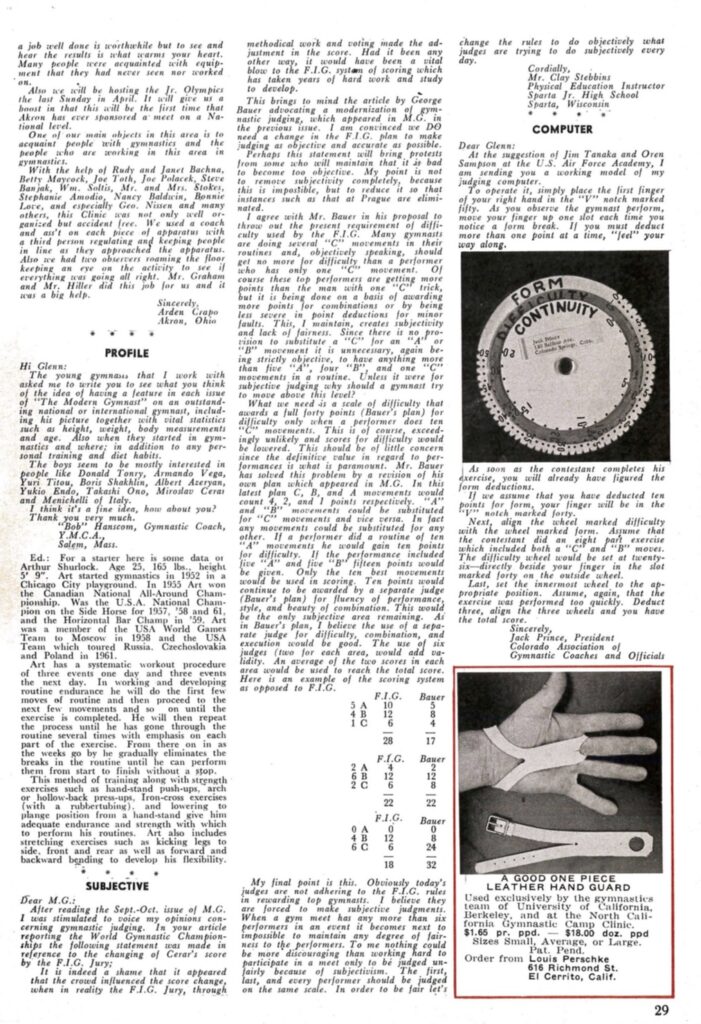A quick recap: The event finals in Prague were delayed 30 minutes because the crowd protested Cerar’s score. They thought that Cerar of Yugoslavia should have scored higher than Shakhlin of the Soviet Union.
After a long conference, the judges raised Cerar’s score from a 9.8 to a 9.9, giving him the gold medal in the event.
Here’s a letter to the editor of the Modern Gymnast in response. It’s the one called “Subjective” at the bottom of the first column. (The letter about the judging “computer” is also fun.)

Here’s a quick synopsis of the letter.
Basic Problem: Judging has become too subjective.
Diving Deeper into Clay Stebbins’s Take: Gymnasts are performing more difficulty than is required, and judges try to find ways to reward gymnasts for performing more difficulty than necessary. For example, they take fewer execution deductions to compensate for the extra difficulty.
The Proposal:
- Abandon the 10.0 system
- Create a difficulty scale with a maximum of 40 points
- C elements = 4 points; B elements = 2 points; A elements = 1 point
- The 10 most difficult elements count, which means
- A routine with 10 A elements would receive 10 points for difficulty
- A routine with 10 C elements would receive 40 points for difficulty
- In addition to the difficulty score, gymnasts would be awarded points in the following areas:
- Fluency of performance, style, and beauty of the combination (10 points)
- Execution (50 points)
- 100 total points possible: 40 difficulty + 10 combination + 50 execution
In other words, Clay Stebbins acknowledged that gymnastics has a subjective side. You watch Cerar’s PB routine and say to yourself, “Yeah, there’s something beautiful about that.” But Stebbins wanted to put subjectivity in its own little box. He wanted to create an artistry score — or what he calls a “fluency of performance, style, and beauty of the combination” score.
Note: In his letter, Clay Stebbins doesn’t specify that execution would receive 50 points. That number comes from Bauer’s original proposal, which Stebbins references and summarizes throughout his letter.
George Bauer’s article is longer, denser, and harder to wade through. But I’ve included it at the bottom of this post for those who want to read it.
My thought bubble…
On the positive side, 50 points for execution is a lot. This would enable judges to really distinguish between routines and be diligent with deductions.
That said, the dichotomy between objectivity/subjectivity breaks down. Judging execution is not entirely objective. We’d like to think it is, but there are always differences of perception.
More importantly, even if math and the Code aren’t your things, it’s important to recognize that members of the gymnastics community were questioning the 10.0 in 1962.
Over the years, the gymnastics community has constructed narratives about why the 10.0 disappeared, but those narratives rarely recognize that members of the gymnastics community had been questioning the 10.0 since as early as the 1960s.
Anyway…
It’s back to the 1962 World Championships in my next post. This time, we look at the women’s competition.


